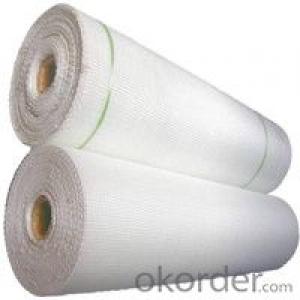Fiberglass mesh is a versatile material that has found its way into various construction and renovation projects. It’s a strong, lightweight, and corrosion-resistant material that can be used in a multitude of applications, including plastering. But what exactly is fiberglass mesh, and how does it contribute to creating a strong base for finishes? Let’s dive into the world of fiberglass mesh and explore its benefits, applications, and installation process.
A Strong, Lightweight Material
Fiberglass mesh is made from woven fibers of glass, which are then coated with a resin to bind the fibers together. This results in a strong yet lightweight material that is easy to handle and install. Its strength comes from the interwoven fibers that distribute the load evenly across the mesh, making it resistant to tearing and deformation.
Resistant to Corrosion and Moisture
One of the standout features of fiberglass mesh is its resistance to corrosion and moisture. Unlike metal meshes, fiberglass does not rust or corrode over time, making it an ideal choice for areas that are exposed to moisture or humidity. This resistance also makes it a popular choice for exterior wall applications, where it can protect the underlying structure from water damage.
Versatility in Applications
The versatility of fiberglass mesh is evident in the wide range of applications it can be used for. From reinforcing concrete and plaster to repairing cracks in masonry, fiberglass mesh can be used in both residential and commercial settings. It’s also commonly used in marine environments, where its corrosion resistance is particularly beneficial.
Creating a Strong Base for Finishes
When it comes to plastering, fiberglass mesh plays a crucial role in creating a strong base for the final finish. By incorporating the mesh into the plaster, it helps to prevent cracks and ensure a smooth, even surface. This is especially important in areas that are prone to movement, such as around windows and doors, where the mesh can provide additional support and prevent the plaster from cracking.
Installation Process
Installing fiberglass mesh is a relatively straightforward process. First, the surface to be plastered must be clean and free of any debris. The mesh is then cut to size and applied to the surface using a suitable adhesive. Once the mesh is in place, a layer of plaster is applied over it, ensuring that the mesh is fully embedded within the plaster. This process not only strengthens the plaster but also helps to create a smooth, professional-looking finish.
Maintenance and Durability
Fiberglass mesh is low maintenance and highly durable. It does not require any special treatment or protection, and it can withstand the test of time without showing signs of wear or tear. This makes it an attractive option for homeowners and contractors alike, as it offers a long-lasting solution with minimal upkeep.
Personal Touch and Emotional Connection
Using fiberglass mesh in your plastering project can add a personal touch to your home or commercial space. It’s not just about the practical benefits of strength and durability; it’s also about creating a space that reflects your style and personality. The smooth, even finish that fiberglass mesh provides can be a canvas for your creativity, allowing you to experiment with different colors, textures, and designs.
Final Thoughts
Fiberglass mesh is an excellent choice for those looking to create a strong base for their plastering projects. Its strength, resistance to corrosion and moisture, and versatility in applications make it a popular option in the construction industry. By following the proper installation process and taking care of the mesh, you can enjoy the benefits of a durable and long-lasting finish that not only looks great but also stands the test of time. So, the next time you’re planning a plastering project, consider using fiberglass mesh to give your walls the support and protection they need.

